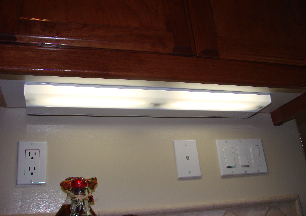 |
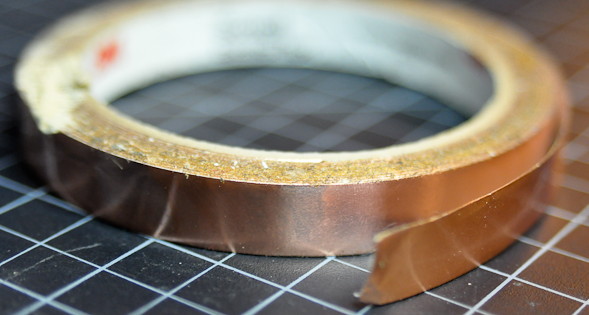 |
|
Under Cabinet Light |
Copper Tape |
|
| From
his past experience Wily knew of a nice touch activated switch available from
Faraday switches. This tiny device has a single transistor output with a
latching function. The unit could be powered by any DC supply ranging from 3v
to 28v. |
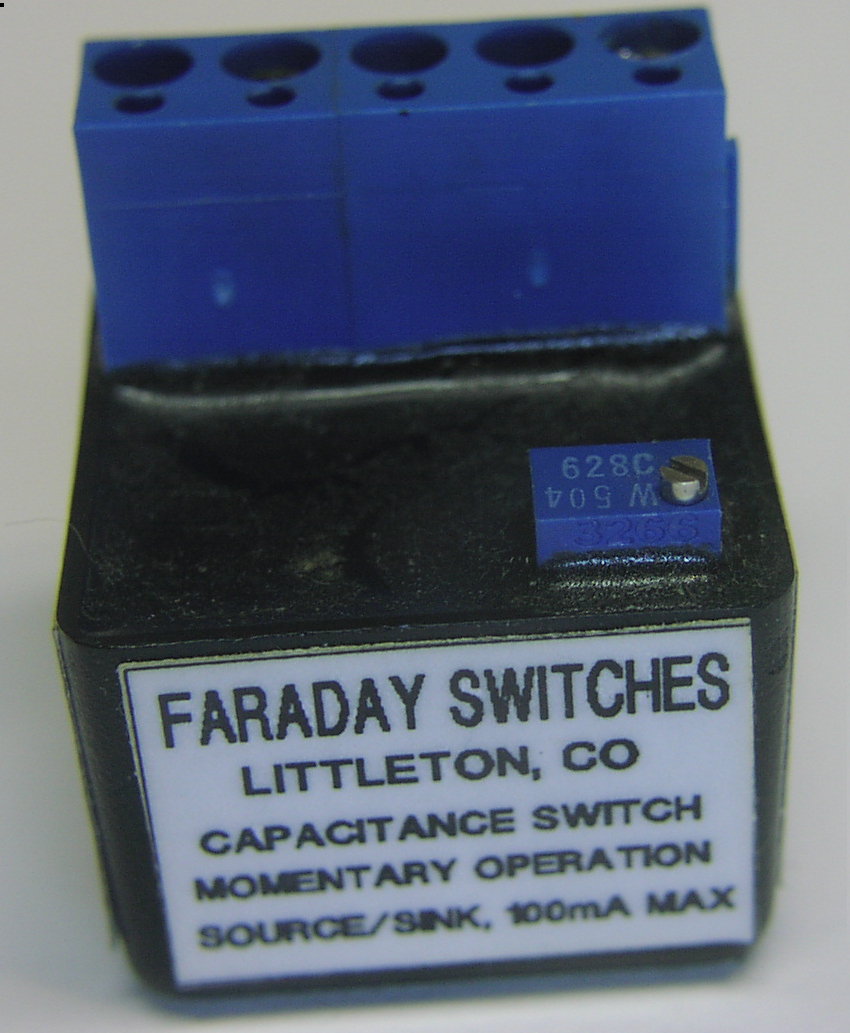 |
How should Wily switch the AC power to the lights?
He could use a mechanical
relay, a solid state relay or a latching relay. Standard relays require
power to hold the relay contacts closed. Solid state relays are more
efficient but they too need 10ma to 20ma of current to maintain an on
condition.
A latching relay is very
efficient since it can be pulsed on and off using short current pulses.
Wily weighed all the options and decided on a latching relay. He picked
a small device made by Panasonic with 10 Amp relay contacts. |
FS3X Faraday
Capacitance Switch |
|
|
Wily’s next
chore was to decide how to power the relay and touch module. The Panasonic
relay had dual 5v coils with a coil resistance of 100 ohms and needed a pulse
lasting only 25 milliseconds to either latch or unlatch the relay. The
Faraday Switch required only 4 microamps of current. Together the two
units required very little power. Wily reviewed his options. He
looked at small AC to DC power supplies. He considered charging up a super
capacitor by tapping into the AC line for power. In the end he decided to
power the relay drive circuit and the capacitance touch switch module from a
common 9v battery. The power demands of the system were so small that the
battery should last for many years. Wily also liked that the battery kept
the touch module and power supply completely isolated from the AC line. |
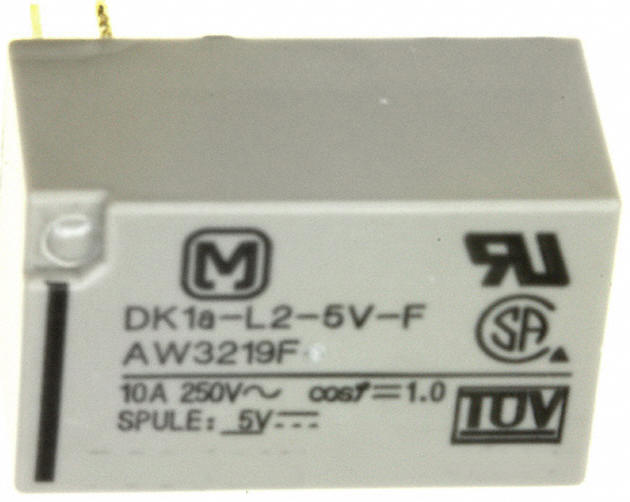 |
|
Panasonic
DK1A-L2-5V Latching Relay |
|
| Wily
decided to split the system into two parts. He would mount the relay inside a
plastic junction box. Four wires leading from that box would connect to a
second box containing the touch switch module, some simple relay driving circuits
and a 9v battery. |
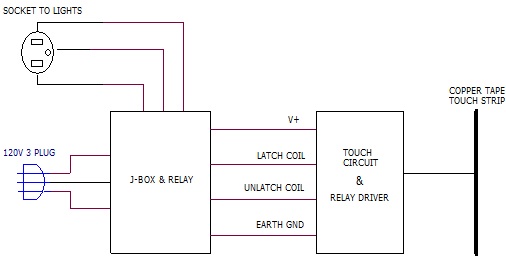 |
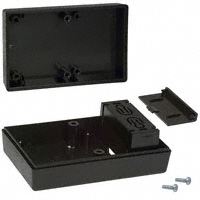 |
|
Touch Control System |
Serpac SR221 Box |
|
|
The complete
circuit is shown below. |
|
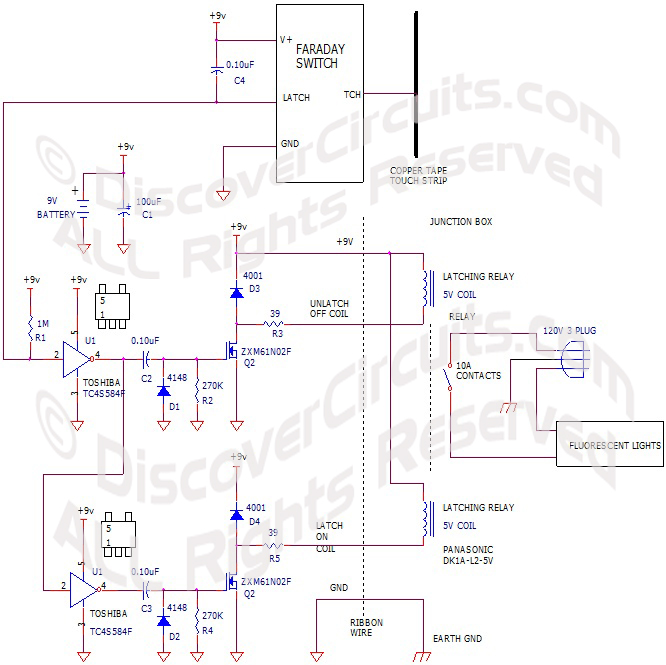 |
|